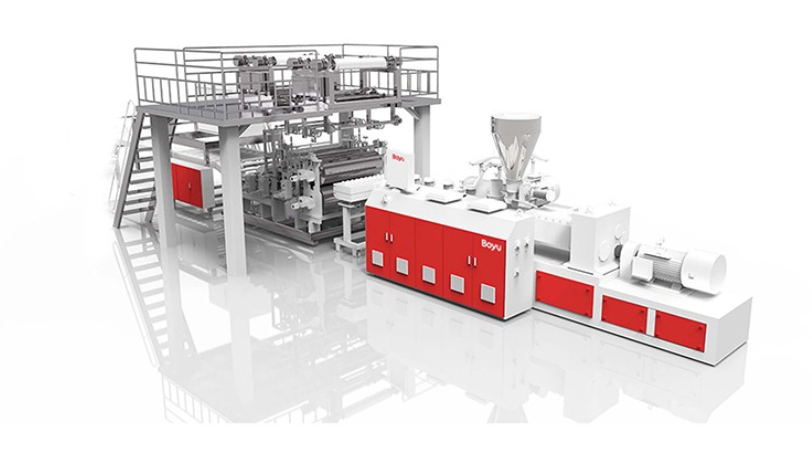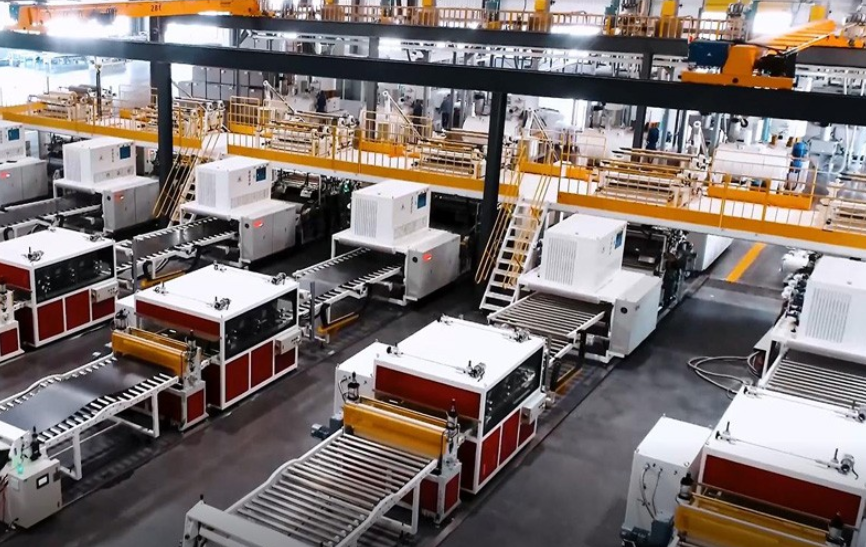Main Types of Plastic Manufacturing Process
Plastic is made up of natural organic materials such as crude oil, cellulose, natural gas, coal, and salt through a polymerization process. Plastic is a versatile material, and each type has its specific mechanical properties. In addition, plastic products are part of every home, office, hospital, and industry, like bottles, electronic products, pipes, floor, and medical equipment.
In the past few decades, people had a high demand for plastics. Due to this reason, the plastics industry produces more than 300 million tons of plastic each year. Under current environmental conditions, all plastics industries must follow the quality and sustainability guidelines published by the government.
This article mainly discusses the most common types of plastic manufacturing processes to help you know more about this industry. Let’s start it!

Introduction to plastic materials
In general, plastic raw materials are solid or elastomers at room temperature. On the other hand, the materials will be heated during processing and become fluid, molten liquid. Plastics are classified into "thermoplastic plastics" and "thermosetting plastics" according to their processing characteristics.
Thermoplastics can be heated and shaped multiple times and recycled. The fluidity of this material is like mucus, in a slow melting state. The common thermoplastics are PE, PP, PVC, and ABS.
Thermosetting plastics will permanently solidify after heating and cooling. The molecular chains will form a chemical bond and become a stable structure. Epoxy resin and rubber are examples of thermosetting plastics.
Types of plastic manufacturing processes
l3D printing
3D printing technology is considered the most effective way to produce creative plastic parts while minimizing errors and waste. The 3D printer builds the material layer by layer to form a complete plastic part.
Since 3D printers don't require tools and have the shortest design time, the cost of producing custom parts is negligible compared to traditional plastic manufacturing processes. In addition, 3D printing enables manufacturers to create plastic parts and prototypes in-house easily, and shorten the production cycle to a few hours.
lCNC machining
Another common method of the plastic manufacturing process is CNC machining. CNC machining is a type of subtractive machining, including milling machines, lathes, and other computer-controlled cutting tools. The process starts with solid metal or plastic blocks, then removes the material by drilling and grinding. Typical applications include prototyping and end-use parts such as pulleys, gears, and bushings.
CNC machining is an effective alternative to creating parts that are difficult to form or require tight tolerances. However, the complexity of the parts will increase the cost of each component. For example, curved internal channels are difficult to produce with CNC machining methods.
lPolymer casting
The unique method of manufacturing certain types of plastic products is polymer casting. Reactive liquid resin or rubber fills the mold in this plastic manufacturing process. This method is commonly used for specific polymers, including silicone, epoxy, polyurethane, and acrylic. In general, polymer casting is suitable for small batch applications.
The initial investment in polymer casting is small, but the thermoset polymers used in casting are usually more expensive than thermoplastics. On the other hand, compared with automated production methods such as injection molding, the final cost of each component is high.
lPlastics extrusion
Compared with other industrial machinery, extrusion machinery is relatively cheap. The extrusion process is similar to injection molding. However, the extrusion system forces the material through the die to create a fixed shape.
Plastic extrusion involves heating and softening the thermoplastic material and then extruding it into the mold. The plastic will form a cross-section consistent with the mold. After cooling, you can cut to the required shape as needed.
The plastic extrusion process is suitable for the high-volume production of various products, including construction products such as pipes, plates, rods, window frames, and seals.
lRotational molding
Rotational molding is the process of heating a hollow mold filled with powdered thermoplastic and rotating around two axes. This method is suitable for larger and hollow parts. Compared with other molding techniques, rotational molding requires cheaper tools because the process uses centrifugal force to fill the mold.
Rotational molding can produce parts with almost uniform wall thickness. You can also add prefinished pieces to the mold, such as metal threads, internal pipes, and structures. Typical rotational molding products include tanks, toys, helmets, and canoe hulls.
lBlow molding
Blow molding is also called hollow molding. This plastic manufacturing process inflates a heated plastic tube inside a mold until it forms into the desired shape. The common materials used are ABS, LDPE, HDPE, PP, PC, and PS. Blow molding is a continuous process that can be fully automated to achieve high productivity and low unit cost.
The blow molding process is the most common type for the large-scale manufacturing of hollow plastic products. A common reason is the process can create specially shaped objects, like water bottles. Typical applications include bottles, toys, automotive components, industrial parts, and packaging.
lInjection molding
The working principle of injection molding is to inject molten thermoplastic into a hardened steel or aluminum mold. This method is the most widely used process for mass manufacturing plastic parts. Typical applications range from tiny parts to large components, such as car bumpers and trash cans.
In addition, no other plastic manufacturing process can match the injection molding's capacity for rapid high-volume production. When the tool is running and the cycle time is only a few seconds, injection molding can produce millions of high-quality parts at a low cost.
How Boyu can help you

Boyu has more than 20 years of extrusion experience, specializes in the production of PVC Flooring Extrusion Production Line, and also is acclaimed as the leader of SPC floor equipment.
With over 90 technical patents and advanced extrusion technology, the company is your trusted partner. In addition, we provide high-quality plastic extruder equipment and production lines for the entire industry.
If you are looking for a reliable supplier, contact us.





